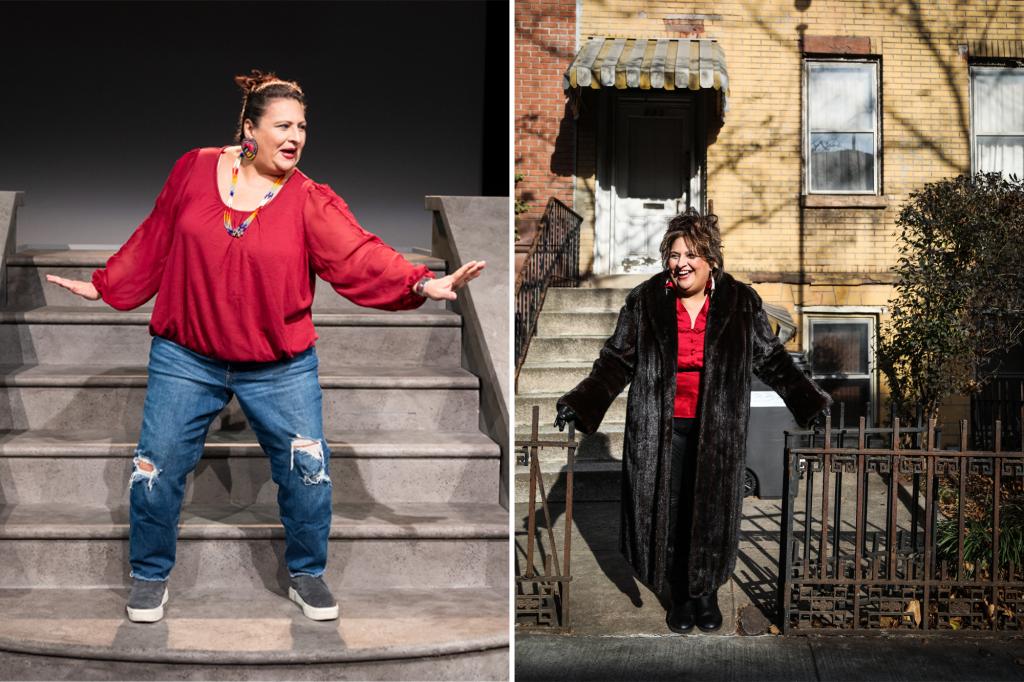Murielle Borst Tarrant, a Native American woman of Kuna and Rappahannock descent, grew up in 1970s Red Hook, Brooklyn, a neighborhood predominantly populated by Italian and Puerto Rican communities. Her stoop became her refuge, a safe haven from the confusion and occasional hostility she faced as the only Native American in the area. Mistaken for both Italian and Puerto Rican, she was often chased by children from one block to the next, caught in a crossfire of ethnic tensions that confined her to the familiar territory of her home’s front steps. This unique childhood experience, fraught with challenges yet laced with humorous anecdotes, forms the basis of her one-woman show, “Tipi Tales from the Stoop,” a theatrical exploration of her upbringing and identity.
The play delves into the complexities of being a Native American in a bustling urban environment, touching upon the casual racism and microaggressions Tarrant encountered. Neighbors, depending on their disposition, would refer to her family as “Indian,” sometimes with affection, other times with derision. Terms like “Wahoo” and “Chief” were also used, highlighting the prevalent stereotypes and lack of understanding regarding Native American culture. Tarrant’s family history in Brooklyn stretches back to the 1800s when her great-grandparents purchased their Red Hook home, a move reportedly met with resistance from the existing community. This historical context underscores the long-standing presence of Native Americans in New York City, a presence often overlooked in mainstream narratives.
Red Hook in the 1970s, as Tarrant recounts, was also influenced by the Mafia. While their presence deterred petty crime and even magically erased parking tickets, it created a peculiar environment where the absence of conventional law enforcement was replaced by an alternative system of order. This unusual backdrop further isolates Tarrant’s experience, adding another layer to the already complex dynamics of her childhood. The seemingly benign interventions of the Mafia, like ripping up parking tickets, created an illusion of safety and order, yet underscored the unconventional nature of her neighborhood’s social fabric. This seemingly contradictory coexistence of organized crime and a sense of community forms a unique backdrop for Tarrant’s coming-of-age story.
The development of “Tipi Tales from the Stoop” was deeply personal and tinged with tragedy. Tarrant’s husband, Kevin, the director of the American Indian Community House, was initially involved in the project. However, his untimely death from COVID-19 in 2020 transformed the play into a vessel for Tarrant’s grief and rage. Channeling the pain of loss and the frustration of her childhood experiences, she infused the production with a powerful emotional core. The play became a testament to resilience, a way to process both personal and societal injustices through the lens of art.
Beyond personal catharsis, “Tipi Tales from the Stoop” serves as a vital platform to raise awareness about the often-ignored presence of Native Americans in New York City. Tarrant, who also served as chairwoman for the indigenous women’s caucus at the UN, emphasizes the importance of acknowledging the continuous history of Native Americans in the city, a history that extends beyond historical textbooks and into the present day. The play is a call for recognition, a reminder that Native American communities are not relics of the past but vibrant, thriving entities woven into the fabric of contemporary urban life.
Through her powerful performance, Tarrant aims to challenge the prevailing narratives that often erase or diminish the Native American experience. Her story serves as a powerful counterpoint to the dominant narratives surrounding immigration and Black history in New York City, highlighting the need for a more inclusive understanding of the city’s diverse cultural heritage. “Tipi Tales from the Stoop” is not just a personal story; it’s a testament to survival, a call for recognition, and a celebration of Native American resilience in the face of historical and ongoing challenges.










